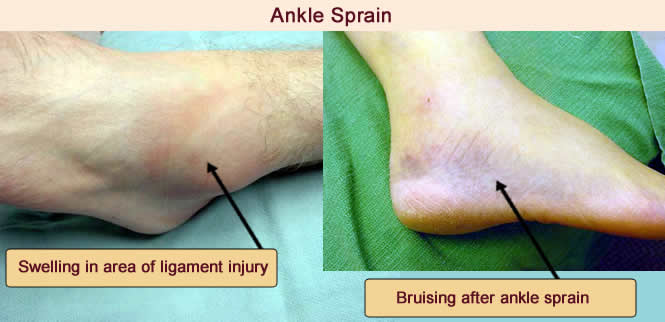Ankle Sprain Rehab
HEM to get a Sprained Ankle - for any faster, fuller recovery written by: serpti While the pain of sprained ankle ligaments can occasionally be quite severe, what is often worse will be the dismal prospect of weeks and weeks of lay up time.
Lingering inflammation. Stiffness. Decreased flexibility. Lack of strength. Limited mobility. The fear of instability.
Typically, these are the symptoms of delayed and incomplete healing as a result of the RICE (rest, ice and compression elevation) approach to treatment that has always been the standard prescription for sprains. Fortunately, there are more approaches to facilitate a lot faster recovery. Beginning a built-in program of exercise, hydrotherapy and massage (referred to as HEM) during the early stages of healing will bring an ankle back to full use within a week.
Let's quickly evaluate the body's reaction to a sprain. Immediately upon injury, our bodies begins the job of healing and repair. Sometimes what looks bad (like swelling) is in fact part of the process of your body doing what exactly is good, sending materials to help rebuild healthy tissue and removing damaged cells and waste. This takes place most intensely right after the sprain, not often for longer than about 72 hours, and during this time period it is prudent to consider care and avoid further injury.
Usually, from the third day post-injury, the different tissues in and around the ankle have performed their emergency clean-up and are starting to lay down new material. The nerve-rich and blood-vessel poor connective tissue in most its variations - tendons, ligaments, fascial sheets, and also the sheathing around every bone, organ and muscle, even though the material that forms the majority of our soft tissue is not really in reality the muscles cells. This product, much like our bones, grows and orients itself in terms of stress. With regards to an ankle healing coming from a sprain, the actions of resisting gravity as well as limiting flexibility in the joint are natural and healthy stresses which lead to proper orientation in the new connective tissue.
This is when the RICE method of injuries goes wrong. It discourages the careful reintroduction of natural stresses which are essential to promote organization of brand new tissue. Instead, we end up getting the seemingly hap-hazard arrangement we understand as scar tissue. And, the RICE approach does nothing to improve circulation and thus speed heaing. Lastly, it encourages immobility which reinforces the nervous system feedback in between the ankle and the brain, protecting the status quo and letting you know you'd better be cautious of this ankle.
So, how exactly does HEM facilitate the healing as well as the speedy and full recovery of the sprained ankle?
Firstly, HEM uses Hydrotherapy, the concept of alternating uses of cold and hot water. This greatly increases circulation, by turns attracting the cells and materials for repair then assisting to flush the waste out via the lymph. The process releases endorphins, thereby reducing pain, although besides this type of water pressure counteract swelling.
Another element is Exercise, that ought to begin gently and slowly, with a give attention to flexibility instead of resistance. This allows the neurological system to re-uncover the normal senses of movement and coordination without triggering the protective defense mechanism. In absence of pain, exercise can progress to incorporate greater resistance, conditioning the brand new tissue to best manage the stresses an ankle experiences.
Massage will be the third component of HEM therapy. Besides massage further improve circulation and for that reason healing, but it may also physically break down scar tissue and help re-orient it to the lines of stress. And, the stress of touch - whether light or firm - may help with "resetting" the nervous system's patterns and help with releasing tension.
Using HEM therapy for sprained ankles certainly has its own proponents, and why not? It seems sensible. Why focus on the discomfort and swelling of the sprained ankle, simply to be left with compromised use? HEM instead provides a route to speedy and full healing. No long lay up and no lingering effects.
For more information about ankle sprain rehab please click here.